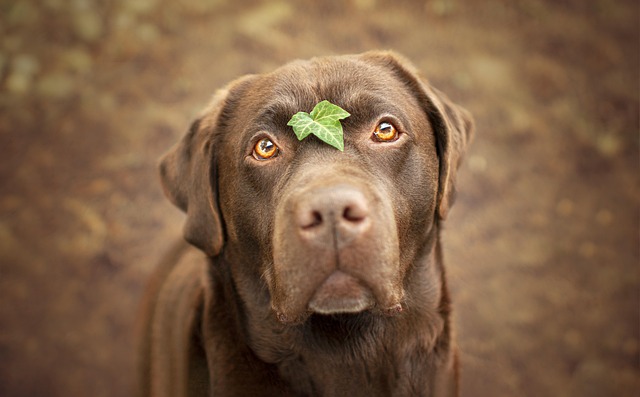
What is the best type of training for a dog?
There’s no one-size-fits-all answer to what makes the best dog training, but most experts agree that methods built on positive reinforcement tend to yield the most lasting results.
That familiar frenzy when the doorbell rings—paws skittering, barks erupting, leash straining toward your bewildered guests. You've probably wondered why "sit-stay" commands dissolve into chaos despite weeks of obedience drills. Actually, it's not disobedience at all. Dogs experience visitor arrivals through primal lenses: territorial instincts firing, social excitement surging, or sometimes anxiety whispering threats where none exist. Their world narrows to scents, sounds, and movement patterns that scream "intruder!" or "playmate!" in a language we humans often misinterpret.
Traditional training hits a wall here. Rewarding calm after the fact? Too late—their nervous system already flooded. Scolding barks? Reinforces tension. Leash corrections? Teaches suppression, not genuine tranquility. I've seen brilliant fetch champions become trembling messes at knocks on the door because conventional methods address surface behavior, not the wildfire of instinct beneath. The gap lies in fighting biology rather than working with it.
What if we flipped the script? Counterintuitive dog calming methods lean into canine nature instead of suppressing it. Take scent work—their primary sense. Before guests arrive, place worn clothing outside your door. Your dog investigates familiar human smells seeping through cracks, rewiring "stranger danger" into "known entity." Or consider retreat spaces: not crates for punishment, but curtained alcoves with chew toys where they observe visitors from safety, honoring their need for choice. Gradual desensitization becomes instinctual too. Start with doorbell recordings played at whisper volume during nap time, paired with high-value treats. Slowly amplify over weeks as your dog connects "ding-dong" with salmon bites, not chaos. These calming techniques for dogs when visitors arrive transform triggers into tedium.
Implementing this requires chess-like strategy. Week one: scent introductions. Place your friend's scarf near the entryway during calm moments, rewarding casual sniffs. Week two: simulate arrivals. Text a neighbor to knock lightly while you scatter chicken in your dog's retreat zone. Only open doors when they're relaxed, even if it takes twenty minutes. When real visitors come, coach them! Ask guests to ignore your dog completely—no eye contact, no baby talk. Toss treats toward their safe space instead. If tension spikes, leash your dog to a heavy piece of furniture six feet from the action, letting them rejoin voluntarily when curious. This dog behavior training for visitors works because it respects autonomy while using natural instincts to calm dogs.
Science backs this shift. Recent studies show cortisol levels dropping 30% faster in dogs given observation choices versus forced interactions. Animal behaviorists like Dr. Susan Friedman emphasize that safety trumps obedience—when dogs control exposure intensity, learning accelerates. Functional MRIs reveal how scent-based interventions activate the brain's reward centers, literally rewriting fear pathways. That said, progress isn't linear. One client's shepherd mix took three months to stop barking, but now greets guests with a wag and a dropped toy. Patience is physiology, not virtue.
Long-term calm blooms from consistency, not grand gestures. Keep that retreat space perpetually available—it’s their recharge station. Rotate novel scents monthly to generalize learning. Notice subtle signs: a lick of lips, head turn away? That’s their threshold whispering. End visits before stress erupts. Most crucially, examine your own energy. They mirror our tension. When you expect pandemonium, you breathe shallowly, grip leashes tighter. Try this: inhale deeply before answering doors, smiling as if welcoming old friends. Often, the final piece in training a dog to be calm when visitors come is training ourselves to embody the stillness we seek.

There’s no one-size-fits-all answer to what makes the best dog training, but most experts agree that methods built on positive reinforcement tend to yield the most lasting results.

Welcoming an 8-week-old puppy into your home is a joy filled with wiggly tails and endless curiosity. One of the first steps in building a strong bond is teaching them their name.

If you’ve ever sat up at night, listening to your gray-muzzled dog pace back and forth, stopping to whine or stare at a wall, you know the worry that comes with a restless senior pup.

Training a service dog starts long before they’re ready to assist with specific tasks—their journey begins with building a foundation of trust, focus, and adaptability, and the timing of this training matters more than you might think.

Watching a tiny puppy fumble through their first attempts to sit can feel like watching a little acrobat mastering a new trick.

If you’ve ever found your flower bed dug up or your favorite shrub chewed to bits, you’ve probably searched for easy ways to keep neighborhood dogs (or even your own) out of your yard.